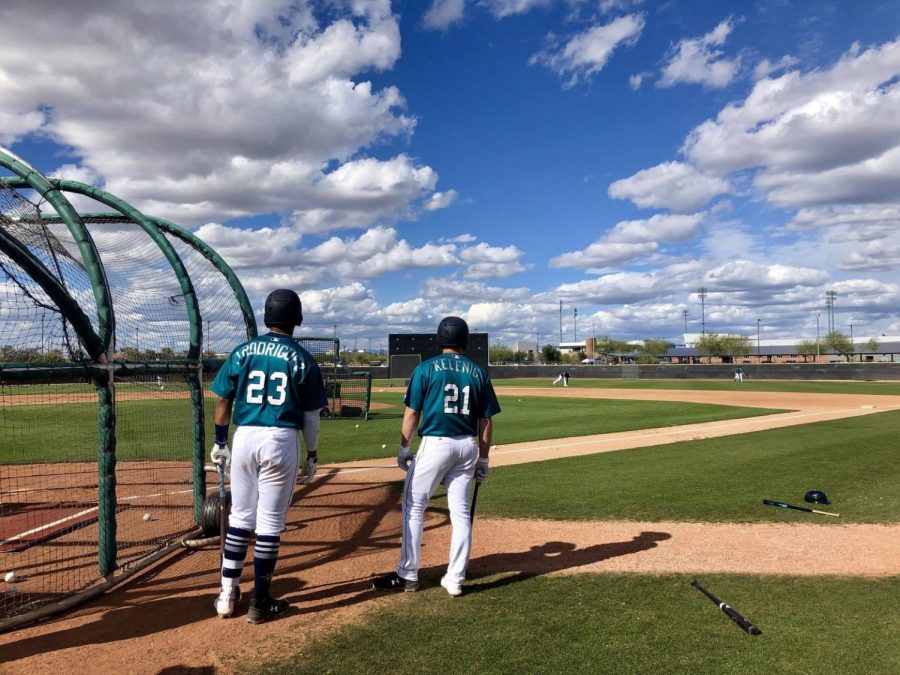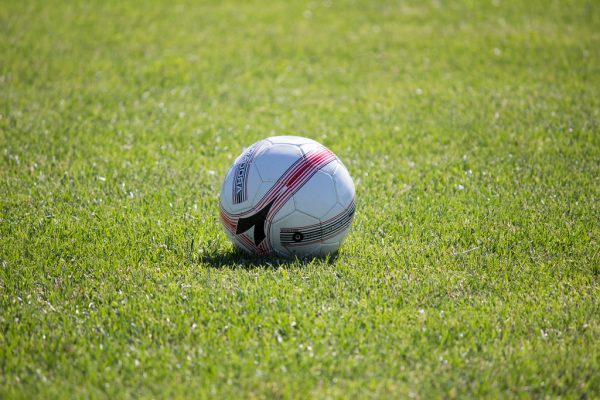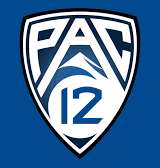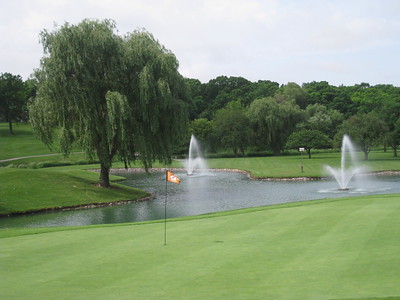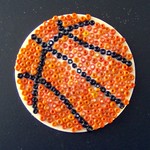Five ways the Mariners can end the Playoff Drought Next Year
Jarred Kelenic and Julio Rodriguez, two core outfielders of the future for the Mariners taking batting practice.
November 19, 2020
If you are reading this article, chances are you know about the Mariners’ infamous playoff drought of 19 years and climbing to this point. Throughout a large portion of those years, fans have witnessed time and time again as Seattle management has squandered an incredible amount of talented baseball players. But for all their shortcomings, the Mariners currently find themselves in a bright situation with another opportunity to put an end to the drought. Here are five ways the Mariners can end their postseason loss streak in 2021.
#1: Free Agent and Trade Markets
As the Mariners enter the 2020-2021 offseason, general manager Jerry Dipoto intends to take the next step in the rebuild process and contend for a playoff spot. He said as much in his post season press conference, saying, “Our goal was to gain our experience through 2020 and make our adjustments. I know the group that will come back and what we anticipate adding to our club, via free agency and trade, I think we’re in a really nice position for ‘21 and our goal would be to go out there and contend for a playoff spot. And I don’t think that is an unrealistic goal.” One major area of issue for Seattle in 2020 was the bullpen, as Mariners’ relievers had the worst ERA in the American League at 5.92. Fortunately for Dipoto, there are several veteran relievers on the free agent market this offseason that can bring high leverage experience should they sign with Seattle. Enter Shane Greene, former Yankees starter turned Tigers closer turned Braves setup man. Greene is 32 years old and has maintained solid success over the past 2 seasons. A four pitch pitcher, Greene relies on his sinker and cutter primarily, though he still uses his slider about 21% of the time. In 2020, he held right handers to a .222/.289/.347 slash line, while lefties saw more success against him, slashing .286/.362/.458. His heavy usage of the sinker and cutter is something that could stand out to Dipoto during the offseason search.
Another candidate that could find himself in Seattle by 2021 is former Oakland A’s closer Blake Treinen. Similar to former Mariners’ closer Edwin Diaz, Treinen had an otherworldly 2018 performance, but struggled mightily in 2019. His main pitch combo is sinker and slider, and while his sinker averaged 96.9 mph in 2020, it didn’t generate the spin rate or whiff rate that the Mariners are looking for in an experienced reliever. The slider, however, did, as Treinen generated a 35.8% whiff rate on the pitch this year. Blake Treinen makes a lot of sense for the Mariners, as he’s most likely to end up with a one year deal, he has a solid upside with a decent floor, and he would provide the back end experience that Jerry Dipoto is looking for. Another area Jerry wants to add to is the back end of the rotation, and there are several trade candidates that can fit that role. Since Dipoto’s nickname (a la MLB Network) is Trader Jerry, we might not be surprised if he shows some interest in them. The main player to look at here is a starting pitcher for the Pittsburgh Pirates. Joe Musgrove was phenomenal for the Pirates this year, and while Pittsburgh is only beginning their rebuild, an arm like Musgrove’s can get them a nice prospect return. While he would require a Top 10 prospect in order for the Pirates to move him, the upside is there: despite the small sample size, he pitched to the tune of 8.43 K/9, 2.21 BB/9, and a 45% ground ball rate. His fastball spin rate is in the 81st percentile of MLB starters, his strikeout percentage is in the 90th percentile, his curveball spin and whiff rate are in the 73rd and 84th percentiles, respectively. Despite requiring a high return, if Dipoto is willing to shell out for Musgrove, his high ceiling could be incredibly effective along with the efforts of rotation mates like Justus Sheffield, Yusei Kikuchi, and top prospect Logan Gilbert.
#2: Prospect Call-Ups and Injured Players’ Returns
During the past two seasons, Jerry Dipoto has been amassing young talent from the Draft and external sources via trade. During his press conference, Dipoto addressed his young players, saying, “… and the second half was going to see perhaps the next wave come, but minimally see the young players that got the reps in the first half improve.” This is all in line with the nature of rebuilds, but at some point those top prospects are ready to make the jump to the big league club. Jarred Kelenic and Logan Gilbert are two such prospects who are knocking on the Mariners’ doorstep next season. Kelenic, a high school first round draft pick chosen by the Mets back in 2018, was acquired by the Mariners in what is now known as the infamous Edwin Diaz/Robinson Cano trade, along with righthander Justin Dunn. Gilbert on the other hand, was also a draft selection from 2018, but he was chosen by Seattle at the 14th overall pick in the first round. Cal Raleigh, a catcher picked in the third round also in 2018, is another top prospect Dipoto anticipates will debut in ‘21. Kelenic and Raleigh have put up impressive power numbers in the minors, and in Raleigh’s case, from both sides of the plate. Another facet from which the Mariners will get players to help them improve next season is the injured list. Their starting catcher, Tom Murphy, missed all of 2020 due to a broken toe, but is expected to fully heal over the course of the offseason. Murphy emerged in 2019 with a surprisingly great year, slashing .273/.324/.535, while putting together an OPS of .858, slugging 18 home runs and 12 doubles. If Murphy can return to form in 2021, his defensive capabilities in addition to his offensive skills would add a huge boost to a contending Mariners team. Another player that is currently injured but expected back for Opening Day next season is outfielder Mitch Haniger. Haniger is a more complicated case than Murphy, because he missed four months of the 2019 season after fouling a ball off his testicle. He then attempted a comeback, but further injured himself in the process, requiring back surgery over that offseason. After a successful surgery, Haniger took his time rehabbing, but didn’t miss out on too much because of the coronavirus shortened 2020 season. Besides injury, Haniger was an All-Star in 2018, slashing .285/.366/.493. He hit 26 homers and drove in 93 runs that season. If the Mariners can get at least half a season of 2019 Tom Murphy and 2018 Mitch Haniger, they will be in prime position to end their drought.
#3: Weak American League West
For anyone who doesn’t know already, the Mariners play in the American League West division of MLB. The same division that features the 2017 World Series* Champion Houston Astros*, the 2020 AL West champion Oakland Athletics, the Texas Rangers, and Los Angeles Angels. Anyone who follows Major League Baseball likely knows how a division can experience a significant weakness when multiple teams do what is called a rebuild. Most standard rebuilds take four years to fully complete, with some longer and shorter, depending on circumstances. As the Mariners emerge from a two year rebuild, they find themselves in the midst of a chaotic and rapidly weakening division. First, the reigning champs, the Oakland Athletics. The Athletics finished 25th in payroll in 2020 and they lost to the Astros in the AL Division Series, therefore they find ways to win for cheap. But this offseason will be a sort of mass exodus for the Athletics. They are losing Marcus Semien (SS), Mike Minor (LHP), Joakim Soria (RHP), Mike Fiers (RHP), Liam Hendriks (RHP), Yusmeiro Petit (RHP), Robbie Grossman (OF), Tommy La Stella (2B), T.J. Mcfarland (LHP), and Jake Lamb (3B). With their payroll and budget there is simply no way Oakland can re-sign even three of these players, let alone all of them. All of Oakland’s free agents this offseason were key contributors to their postseason teams from 2018-2020, so the fact remains that the Athletics will look very different and significantly weaker in 2021 than they did in 2020. As far as the Houston Astros go, they are also losing their core outfield of George Springer, Michael Brantley and Josh Reddick in free agency this offseason. Due to certain events and past transgressions, these players would most likely want to have as much of a fresh start as possible, and the only way they can do that is to find a new team. So while the Astros still have their core infield of Alex Bregman, Carlos Correa, Jose Altuve, and Yuli Gurriel, they are most likely losing significant bats in Springer and Brantley. In addition, they only have those four core infielders for one more season before they too become free agents, at which point the Astros’ championship window will be closed tightly. The last two teams are the Texas Rangers and Los Angeles Angels and are in two completely different situations, and neither is good. For the Rangers, the debut of their new stadium was a complete nightmare, except for hosting the World Series. They had the intent of contending this year, but ultimately they were simply the worst team in baseball instead. So now they are beginning a rebuild, which means they will not seriously challenge anyone for an average of four years, while they stockpile young talent. As for the Angels, they continue to rot the prime of one of the greatest players in baseball history, Mike Trout. The Angels have no pitching depth whatsoever and no farm system to rely on, and their ownership doesn’t seem to get it. Their offense is solid, lead by Trout, an excellent third baseman in Anthony Rendon, their once-unicorn-turned-full-time-DH Shohei Ohtani, an aging but still semi productive Albert Pujols, and a solid bat in Justin Upton. But when their best starting pitcher is Dylan Bundy, and the bullpen has no legitimate high end relievers, that causes serious problems. Combine that with their GM being recently fired, the Angels are in a position of turmoil right now which may set up the Mariners nicely for the future.
#4: Expanded Playoff Picture
MLB Commissioner Rob Manfred expanded the postseason in 2020, to an NCAA-esque bracket of 16 teams with a best-of-three Wild Card Series initially, followed by the standard best-of-five Division Series and best-of-seven League Championship and World Series. Although 16 teams in a postseason is too many, Commissioner Manfred has said that expanded playoffs are here to stay for the long term. He has expressed interest in 12 or 14 team playoff brackets, which would add at least two more Wild Card spots than the traditional 10 team bracket with three division winners and two Wild Card seeds. Expanding the playoffs could be a good thing for the Mariners, who look to begin their contending window next season and with more and more youthful teams building up, like the Toronto Blue Jays, Chicago White Sox, and Miami Marlins, more playoff spots could lead to more tightly contested Postseason matchups. This area is the least under GM Jerry Dipoto’s control, but if all of the rest of the things in this article fall into place, the Mariners could find themselves in a very exciting spot come 2021.
#5: Rookie Performances
The Mariners saw several rookies perform extremely well at the Major League level in 2020. There’s the obvious one, the 2020 American League Rookie of the Year, Kyle Lewis. But then there was the 2020 AL Gold Glove winner at first base, Evan White. White struggled at the plate in 2020, but showed flashes of raw power and contact skills. Despite the high strikeouts and low average, Evan was able to maintain his elite defense, posting a .998 fielding percentage and committing only one error in 443 innings this season. In addition, he turned 36 double plays at first this season, good enough for top ten in MLB. Another rookie who lived up to his standard this season was lefty starter Justus Sheffield. Sheffield came off of a rocky and inconsistent 2019 campaign, but he silenced any doubt about his stuff this season, going 4-3 in 10 starts with a 3.17 FIP and a 3.3 walks per nine rate, down 1.2 from 2019. By working on his command, control and conviction on his pitches, Sheffield was able to pitch significantly better in 2020 than 2019. The Mariners have several prospects ready to debut in 2021 and if they can perform to even half of what Lewis provided offensively, what White provided defensively and the level of success that Sheffield found in 2020, the Mariners will look even more dangerous than a lot of people imagine they will be.
When most baseball fans hear someone mention the Mariners, they immediately associate Seattle with a talentless, horribly managed baseball team that will never get its feet off the ground. While that description fits Mariners’ franchise history, it is simply not an accurate representation of the current team of Seattle Mariners. Although it is true they have not played a postseason game in just about 20 years, it is more than being a Mariners fan in 2021 won’t suck.

